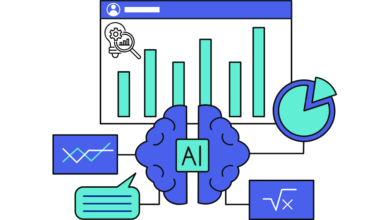
Sustainability targets are no longer a nice-to-have – they’re a board-level priority.
Today, business leaders face growing pressures for greater transparency around sustainability from regulators, investors, customers and employees. The 2022 United Nations Climate Change Conference, COP27, emphasised the importance of moving from commitments to action and the recent public backlash against ‘green washing’ has highlighted the increased scrutiny over sustainability commitments from businesses whose promises are not reflected in real action.
Business leaders are now under increasing pressure to demonstrate progress on their goals.
One IBM study found that in 2022 almost half (48%) of global CEOs said increasing sustainability is one of their highest priorities – up 37% since 2021. However, the same study also revealed that only 23% of CEOs are fully implementing sustainability strategies across their organisation today, which reveals the discrepancy between intention and action present in so many businesses.
One major reason for this gap is that business leaders do not have the reliable data insights they need to create comprehensive environment, social and governance (ESG) strategies or the frameworks to measure progress – hindering their ability to move beyond commitments and into action.
In 2023, it is therefore imperative that organisations invest in new processes and technologies, like Artificial Intelligence (AI), to bridge the gap from strategy to impact and accelerate their sustainability efforts.
Building a data foundation for ESG
ESG goals are useful tools for progress but without the right data, business leaders will struggle to create effective frameworks for real improvements. Data is the critical ingredient to deliver results against these goals, and business leaders need to prioritise investment and resources into building a comprehensive data foundation and strategy.
The good news is that there is a plethora of environmental data available across an organisation’s operations that can be pulled from facility operations, energy consumption, asset maintenance, IT infrastructure and more.
At the same time, it’s a daunting task to collect and make sense of volumes of data that sit in different silos across a company. Organisations must also be able to report data to a variety of stakeholders and against a complex landscape of ESG frameworks.
In the year ahead, stakeholders will hold leaders more accountable for demonstrating tangible results when it comes to sustainability. Businesses will turn to automation technologies for the collection and consolidation of hundreds of data types to consistently deliver transparent, verifiable, financial-grade information and report on progress.
AI technology helps businesses manage, analyse and operationalise data, equipping companies to report against their goals. Companies will be able to measure ESG data where it is stored and transform it into predictive insights that can be used to assess progress towards sustainability benchmarks, and to prioritise areas for improvement. These insights will be crucial not only for reporting, but also taking data-driven actions to reduce the environmental impact of daily business operations in areas from supply chain to physical assets and facilities, data centers and more.
Creating more responsible, transparent supply chains
Companies need deep visibility into the supply chain to reach their sustainability goals and meet emerging ESG-related regulatory requirements. The ability to trace products back to their source is essential to certify they were produced in an ethical and sustainable manner, and consumers increasingly expect full transparency from the first kilometer to the last mile of the supply chain. Understanding the carbon footprint is also key, as scope 3 emissions can account for up to 90% of overall greenhouse gas emissions.
Supply chain challenges are some of the most pressing issues facing businesses today and by increasing investment into data and AI, businesses can succeed in making them more sustainable and circular.
The key to this will be using trusted, secure data. Employing data, analytics and AI can allow organisations to optimise workflows and provide this visibility, and CSCOs will increasingly apply AI and a data-driven approaches to meet supply chain challenges.
Applying AI technology effectively will enable companies to establish more transparent, traceable and decarbonised supply chains. AI and automation can help CSCOs and their teams to collect data, identify risk, validate documentation and provide audit trails, even in high inflationary periods, while also managing their carbon, waste, energy, water, consumption and material utility. This can right-size inventory to help companies reduce waste and reduce the time needed to trace product provenance from days to seconds.
Mitigating the impact of changing weather
Business leaders cannot ignore the growing risks of climate change. Extreme weather, climate action failure and human-led environmental damage are the top three most likely risks for businesses over the next ten years, according to the 2021 World Economic Forum global risk report.
In the coming year, companies will increasingly look to harness weather and climate data to address climate risk – and AI will be the key.
There is a rich supply of valuable climate related data available, including real-time and ongoing observations about weather as well as business operations. But companies are not yet taking full advantage of this information.
AI technology can play a critical role in helping companies combat the effects of climate change. By combining AI, weather, climate and operational data, it becomes easier to manage climate risks affecting business operations, and companies are better positioned to advance ESG goals. For example, consistent weather and climate data analysed by AI allows companies to drill down into specific issues, as well as ladder up into broader reporting structures such as identifying which regions, buildings or assets may be contributing a disproportionate amount of carbon emissions to prioritise improvement efforts.
The impact and urgency of climate change and ESG is galvanizing the business world with an intensified focus on accountability and action. Looking out at 2023 and beyond, AI has the power to be a driver of sustainability, helping businesses act now to address some of the most pressing issues of our time and build a more sustainable future for the planet.



